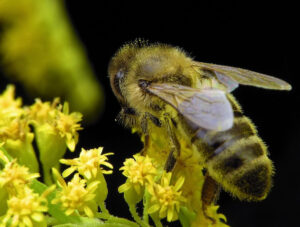The climate is changing.
In the Pacific Northwest, bird migration time is shifting as well as the flowering time of many of our native plants.
For many of us living in our maritime climate, a little more warmth in the winter would be welcome – but the downside is significant.
 Most of our native plants require pollination. Will the blooming time of the spring plants remain in sync with the emergence time of their insect pollinators?
Most of our native plants require pollination. Will the blooming time of the spring plants remain in sync with the emergence time of their insect pollinators?
Last year the fruit trees bloomed early, but many of the insect pollinators had not yet emerged from their winter dormancy. It was a poor fruit season.
Rufus Hummingbird arrival on Whidbey Island corresponds to the blooming of red current shrubs. The red currents are a major food source for the hummingbirds which in turn pollinate the currents. Timing is everything!
In our mountainous areas another type of synchrony exists – the timing of snow cover and the coat/feather cover of some of our mammals and birds.
Predators such as least and long-tailed weasel as well as the ermine have a pure white coat in winter that blends into the show-covered landscape as they hunt.
Our grouse-like White-tailed Ptarmigan also is white in the winter, but its white coat aids in avoiding predators. Can these species adapt to shift their seasonal timing in response to the rapidly advancing human driven climate change?
Perhaps the question we should be asking is what we can individually do to help slow the rate of climate change. Hint – Trinity’s solar panels meet most of its electricity needs without contributing to the global increase in atmospheric carbon that is driving climate change.
Since the mid 1800’s, atmospheric carbon dioxide has increased from 280 parts per million to over 420 parts per million. Each of us are called to do our part.
Thanks for reading.
— Joe Sheldon
P.S. Direct comments to [email protected]


